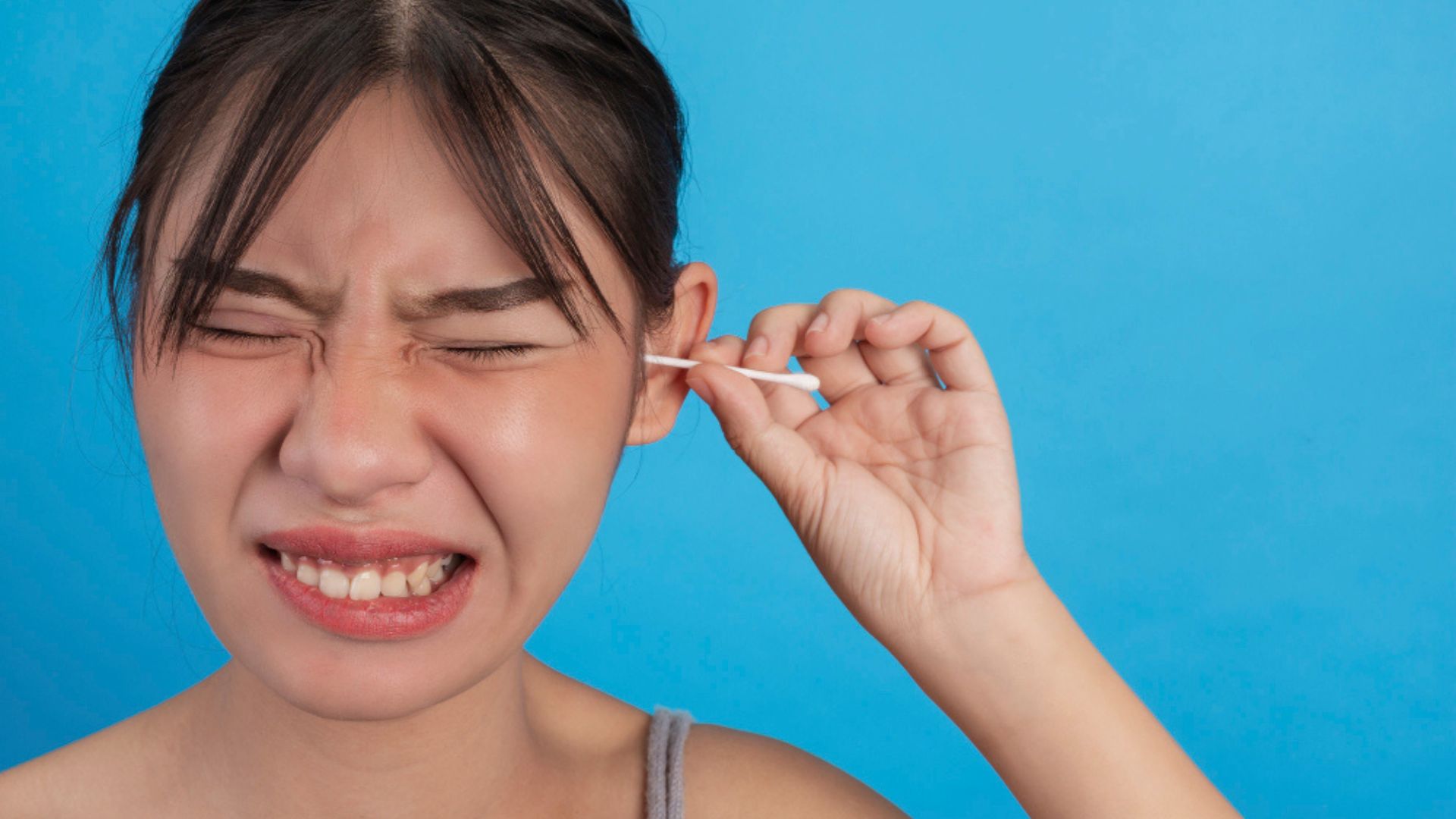

How to Clean Ears Safely at Home: Tips and Precautions
We’ve all felt that strange tingling or itchy sensation deep inside the ear. It’s tempting to grab a cotton swab and in the worst case scenario even use a pen cap or our pinky finger, convinced that a quick scratch will bring instant relief. It sure does feel good, but this unhealthy obsession of ours can have worse consequences, which most of us are unaware of. This common act is one of the most dangerous things you can do to your ears.
The biggest secret in ear health is that our ears are brilliant self-cleaners. Our job isn’t to dig for treasure, it’s to simply not get in the way. That sticky, yellowish stuff which is cerumen or earwax is actually useful, it traps dust, repels water and keeps the ear canal healthy.
Still, most of us think, “Just a quick clean won’t hurt” and feel oddly satisfied when we see that yellow residue on the cotton swab and mistake for dirt, feeling good that we have successfully cleaned our ears but that residue is actually earwax, which in the first place is not something that needs to be cleaned at all.
The truth is, your ears are like a well-designed self-cleaning oven. That waxy stuff? It’s not dirt, it’s ear gold. It’s like your ear’s personal bodyguard trapping dust, fighting germs and keeping things running smoothly, keeping your ear canal happy. It’s only when too much wax is produced that things get clogged.The only part that needs cleaning is what you can see the outer ear and the very entrance to the canal. A warm washcloth after your shower is all most people ever need.
Safe home routine Step by Step
1. Clean only the outer ear
After showering or bathing, gently wipe the outer ear that is the pinna and the entrance to the canal with a warm, damp washcloth. Do not probe the canal. This is all most people ever need.
2. If wax feels “stuck,” soften it first (48-72 hours)
If you have symptoms of mild wax build-up like reduced hearing, fullness, mild itching you can soften the wax with drops for a couple of days:
Safe softeners commonly recommended:
Mineral oil, olive oil or baby oil a few drops once or twice daily.
Over-the-counter carbamide peroxide drops follow package directions.
Dilute hydrogen peroxide may be used in some cases but avoid it if you have recurrent ear infections or a known eardrum perforation.
Directions : Use an eyedropper or a clean dropper, lie on your side, place the drops, stay on your side for a minute, then sit up and let excess drain. Repeat as directed for 48-72 hours. If symptoms persist, see a clinician.
3. Gentle warm-water irrigation (only if appropriate)
If softening doesn’t help, gentle irrigation with a rubber-bulb syringe and warm body-temperature water can flush softened wax out. Important safety points:
Use water at body temperature to avoid dizziness.
Tilt your head, carefully squirt little bits, then tilt to drain.
Do not irrigate if you are perforated eardrum, ear tubes, history of ear surgery, active ear infection, diabetic or immunocompromised these conditions put at risk for complications.
If irrigation causes pain, bleeding, severe dizziness or discharge, stop immediately and seek professional care.
4. Dry the ear gently
After irrigation or showering, tilt your head to drain and gently pat the outer ear dry with a towel. Avoid forcing anything into the canal. If needed, you can use a hair dryer on the lowest, cool setting held several feet away to encourage drying don’t aim it straight into the ear
What NOT to DO and WHY?
1. The Cotton Swab : I know, I know. It feels so satisfying. But here’s the reality you’re not pulling wax out, you’re packing it down. You’re shoving it deeper into the canal, creating a solid, impacted plug. At best, this causes blockage. At worst, you can scratch the delicate ear canal skin or even puncture your eardrum.
2. Ear Candling : The scariest trend for your ears.It doesn’t “suck out” toxins. It’s a great way to get hot wax dripped on your eardrum, set your hair on fire or burn your face. Multiple guideline bodies and the medical literature show they’re ineffective and dangerous. Burn and ear injuries have been reported.
3. The “Whatever’s Handy” Method : No bobby pins, no paper clips, no car keys. If it wasn’t designed for your ear, it doesn’t belong there. These are unsterile, sharp and just waiting to cause an injury.
When to see a healthcare professional
Make an appointment if you have:
Significant hearing loss, persistent ear pain, drainage especially bloody or smelly or repeated infections.
Vertigo, severe dizziness or ringing tinnitus that is new or worsening.
A history of eardrum perforation, ear surgery, ear tubes, recurrent ear disease or if you’re diabetic or immunocompromised these situations make home irrigation unsafe.
Clinicians can remove wax safely using microsuction, a curette or controlled irrigation performed by trained staff. These techniques are faster and safer for people with tricky or recurrent impactions.
When you have that truly “clogged” feeling that won’t go away, it’s okay to call for backup. That’s when a quick search for “ear suction near me” is your best move. A quick, professional clean can bring you that “ahhh, I can hear everything again!” relief.So, trust your ears and know that safe, simple help is always nearby if you need it.



